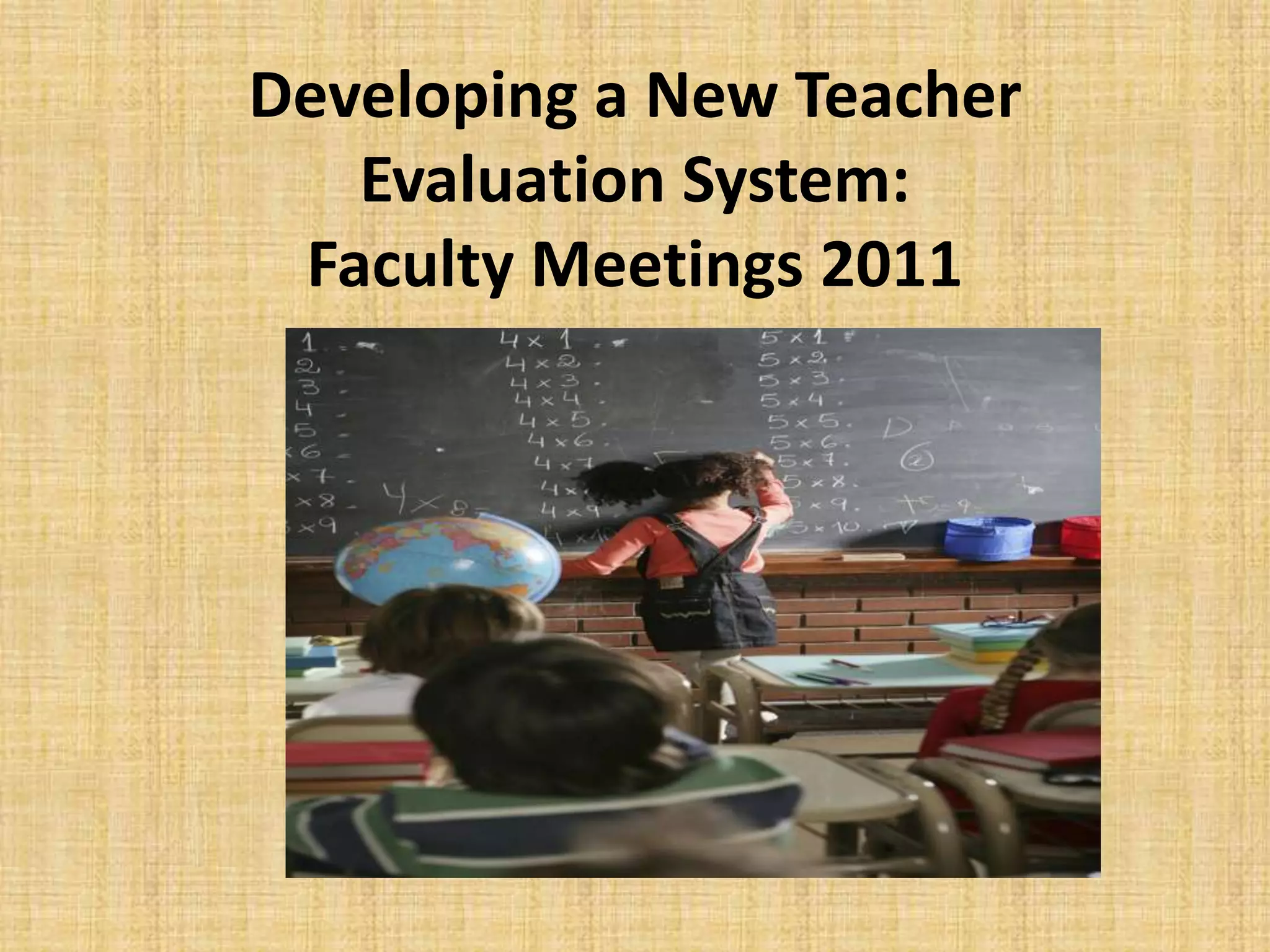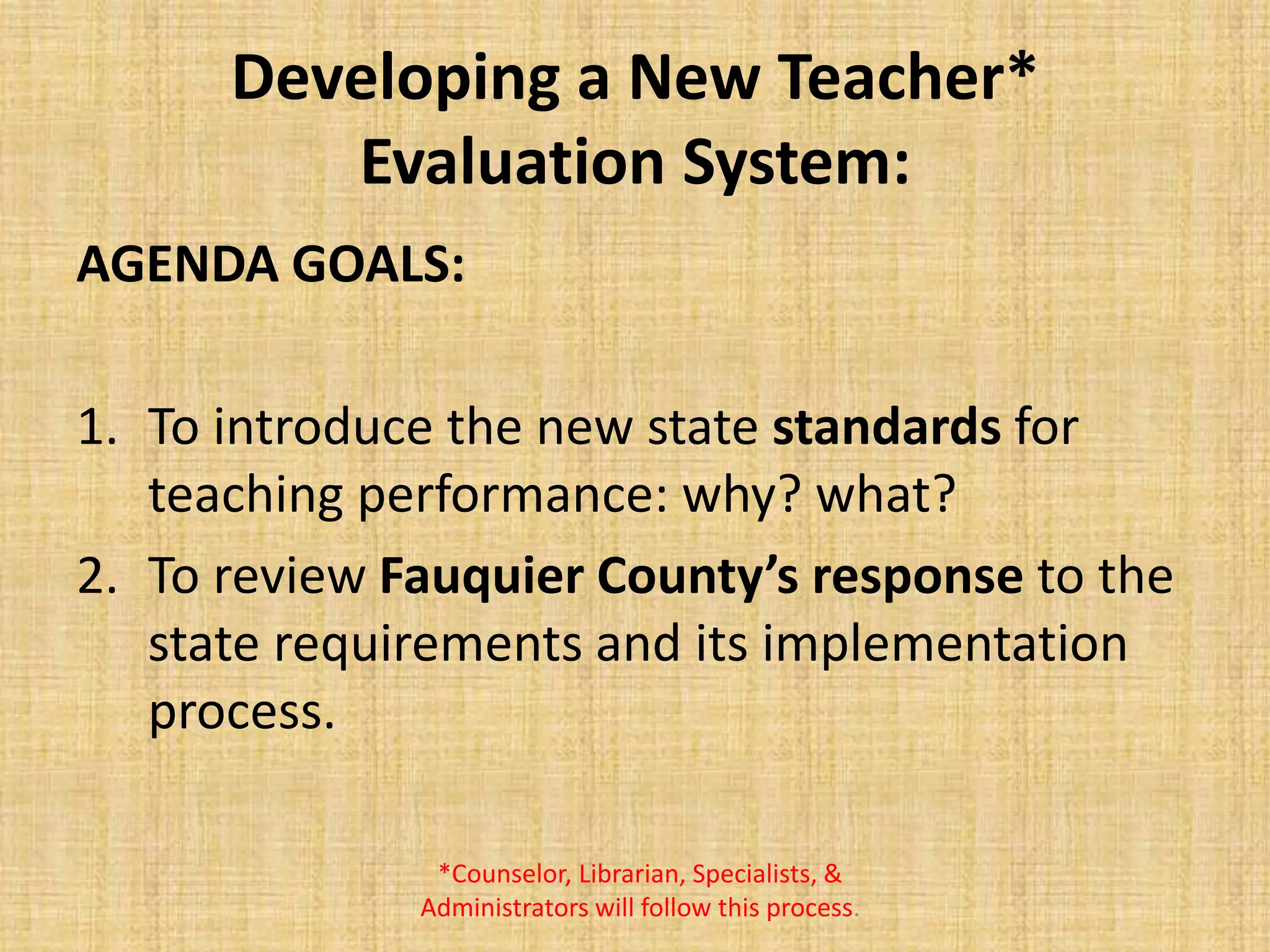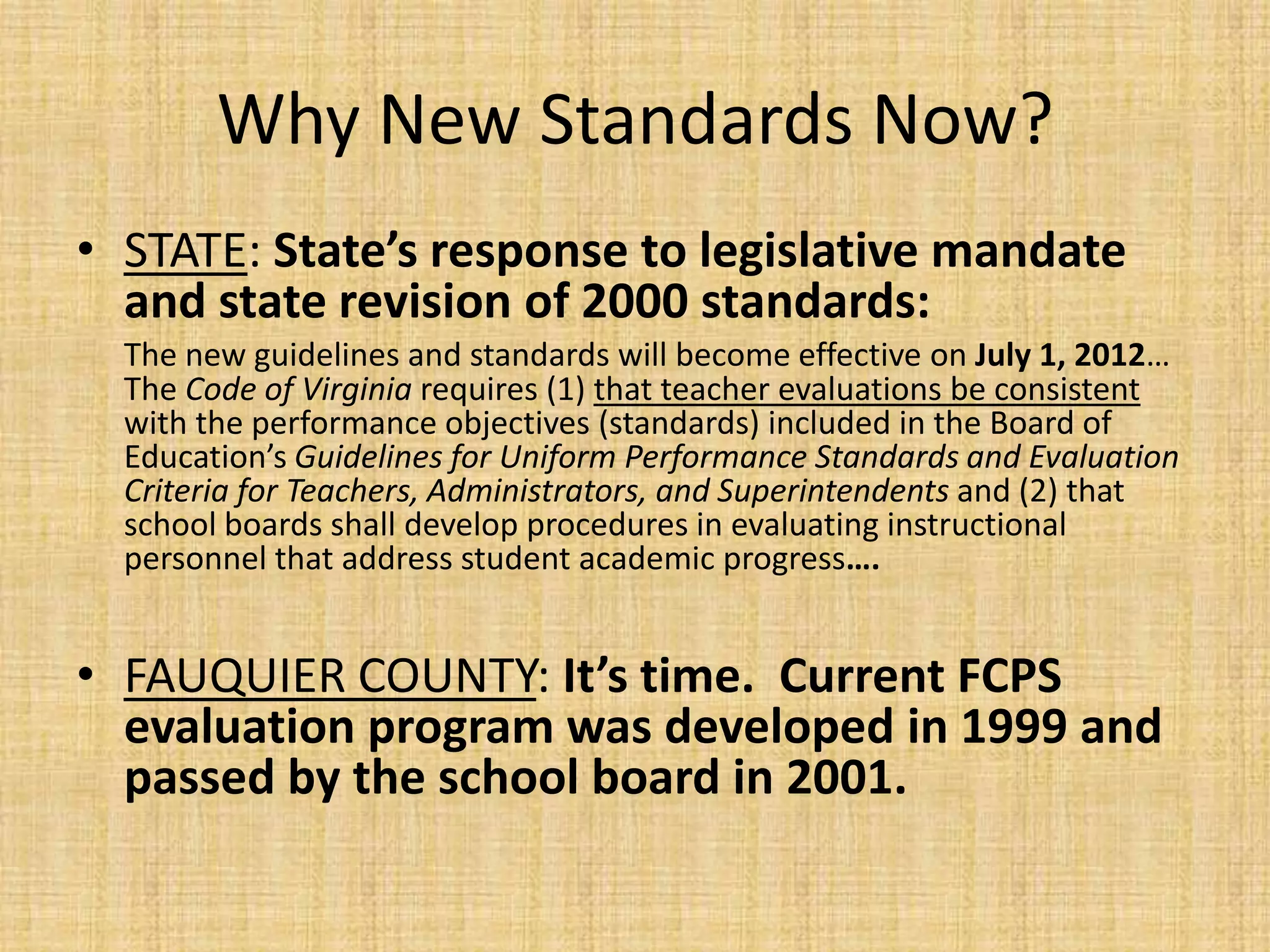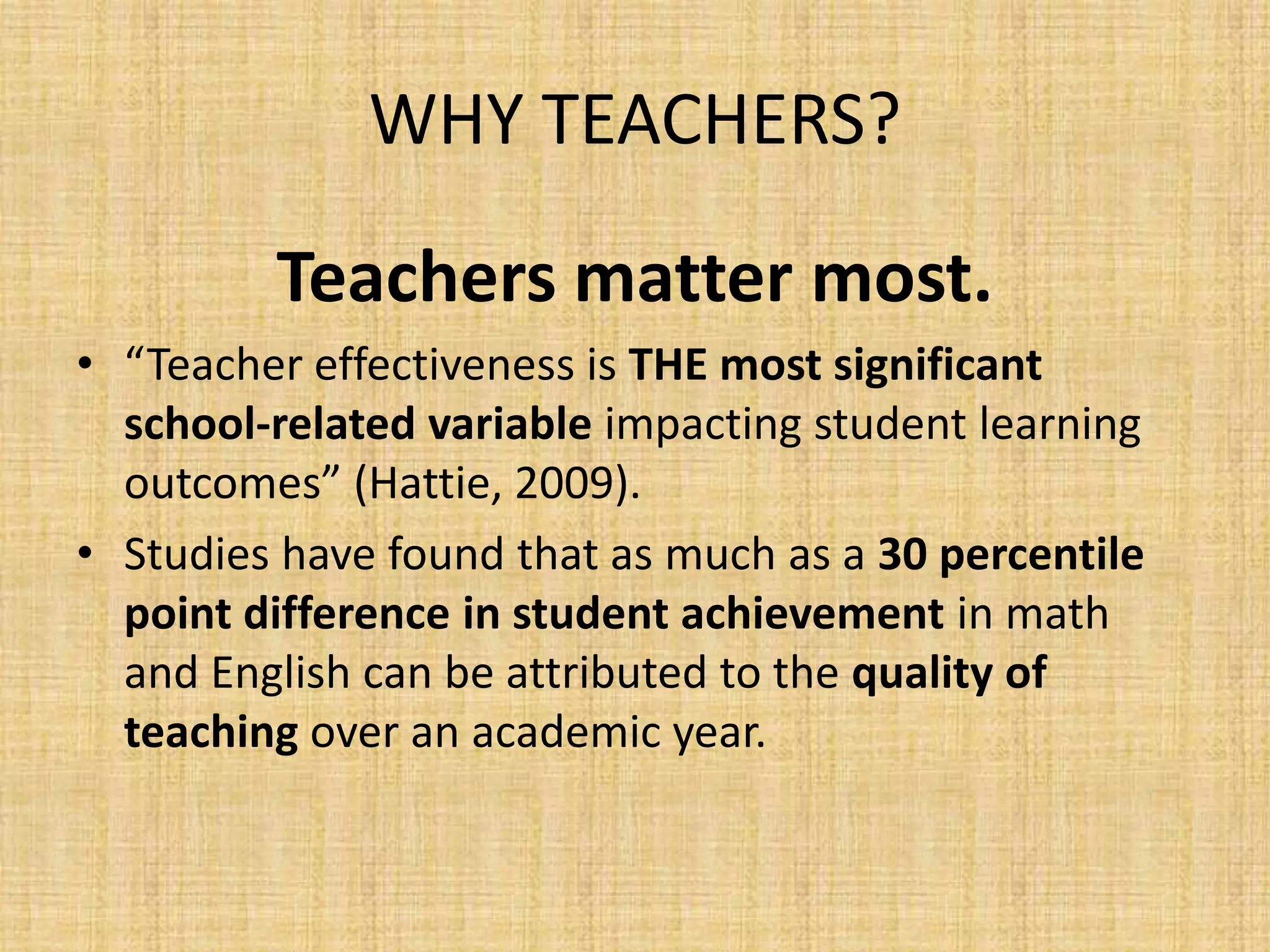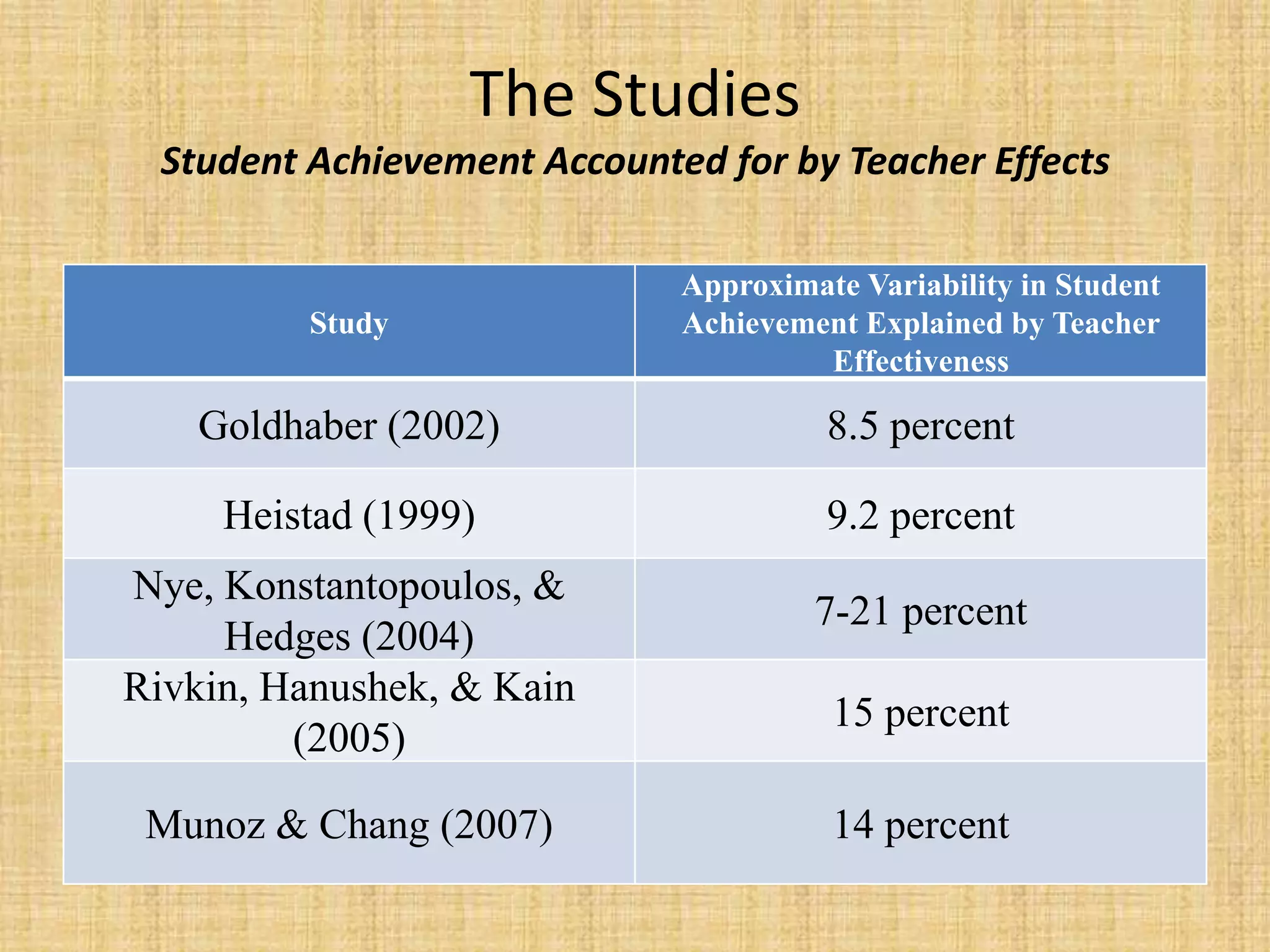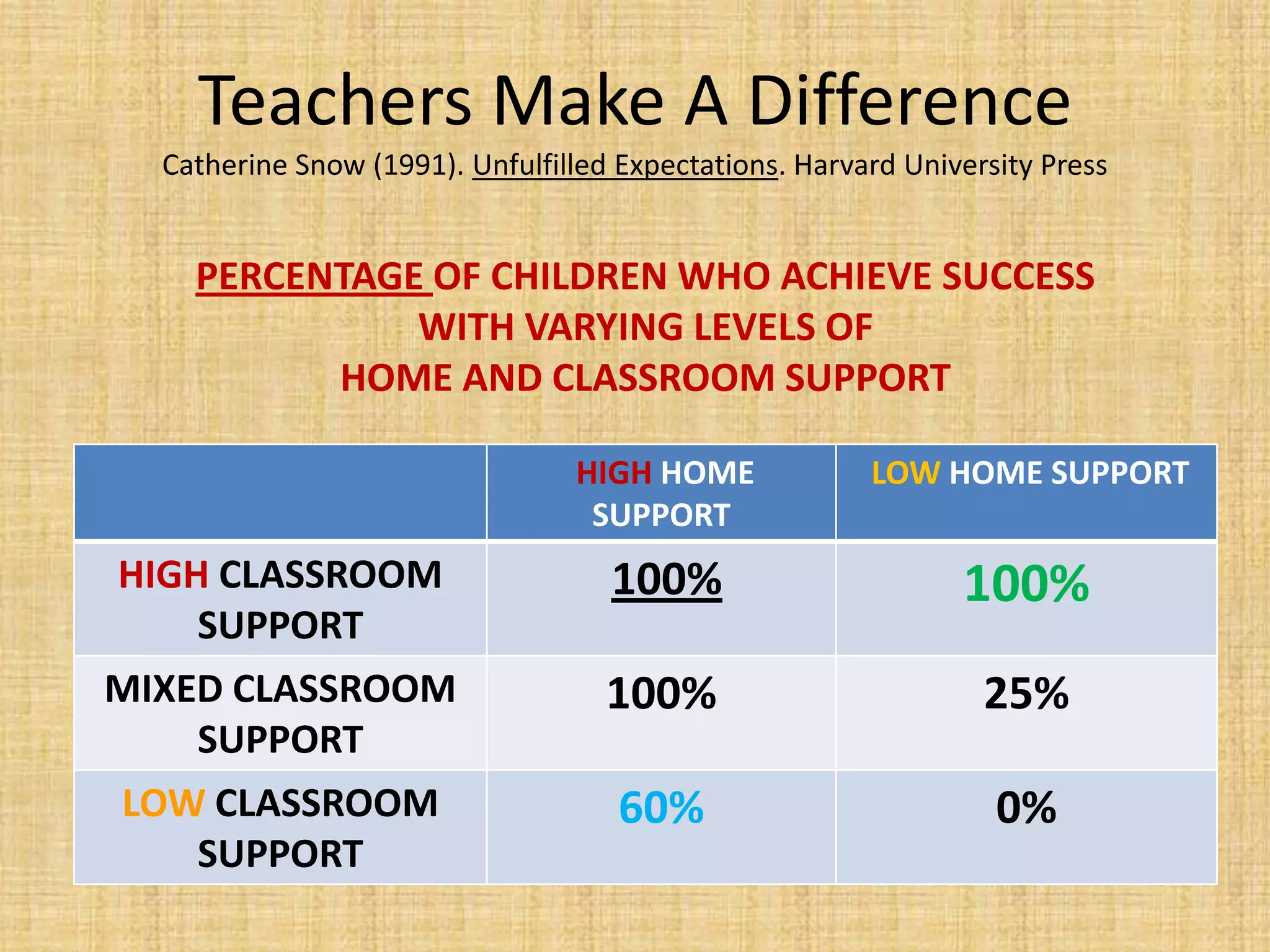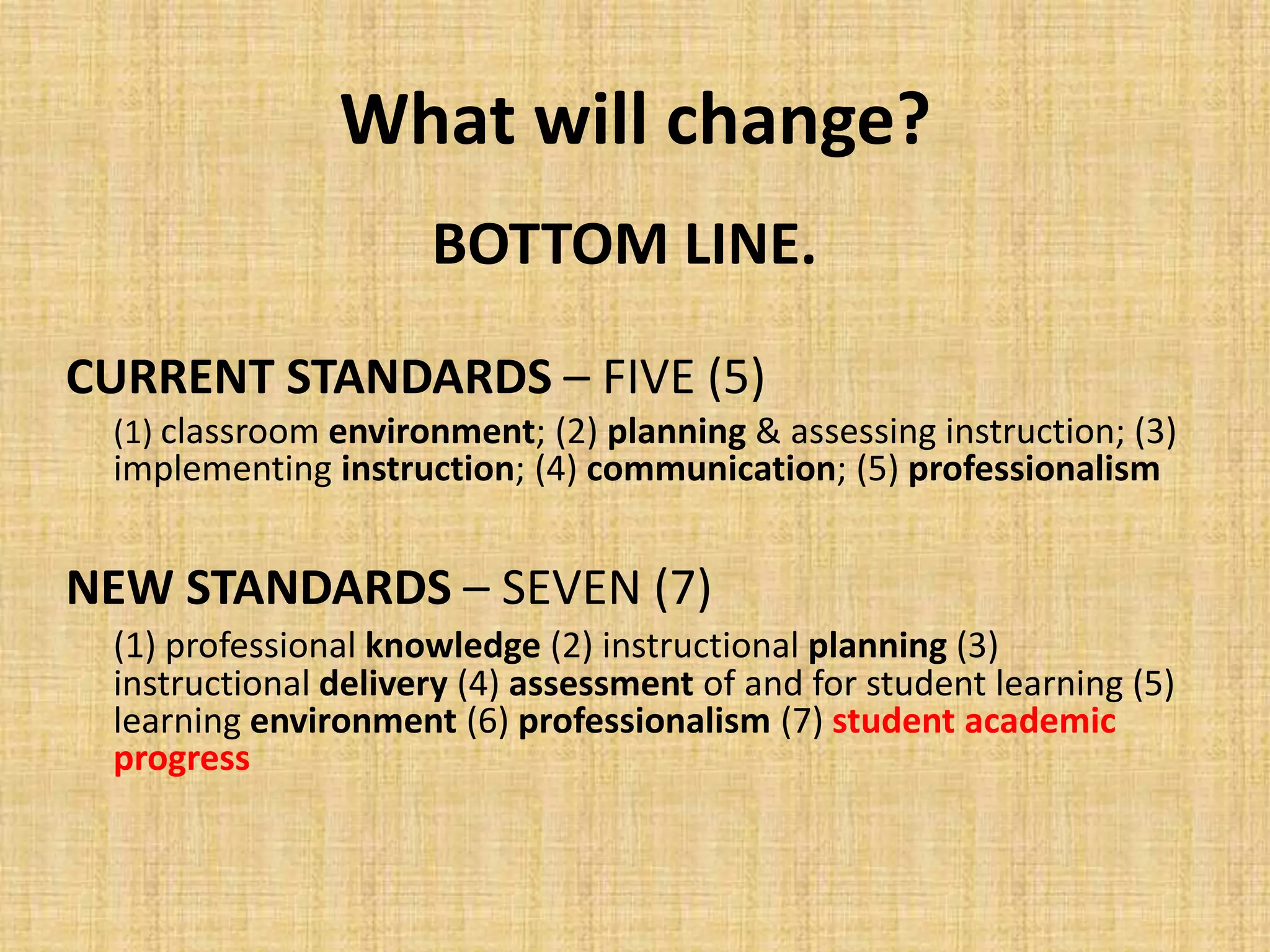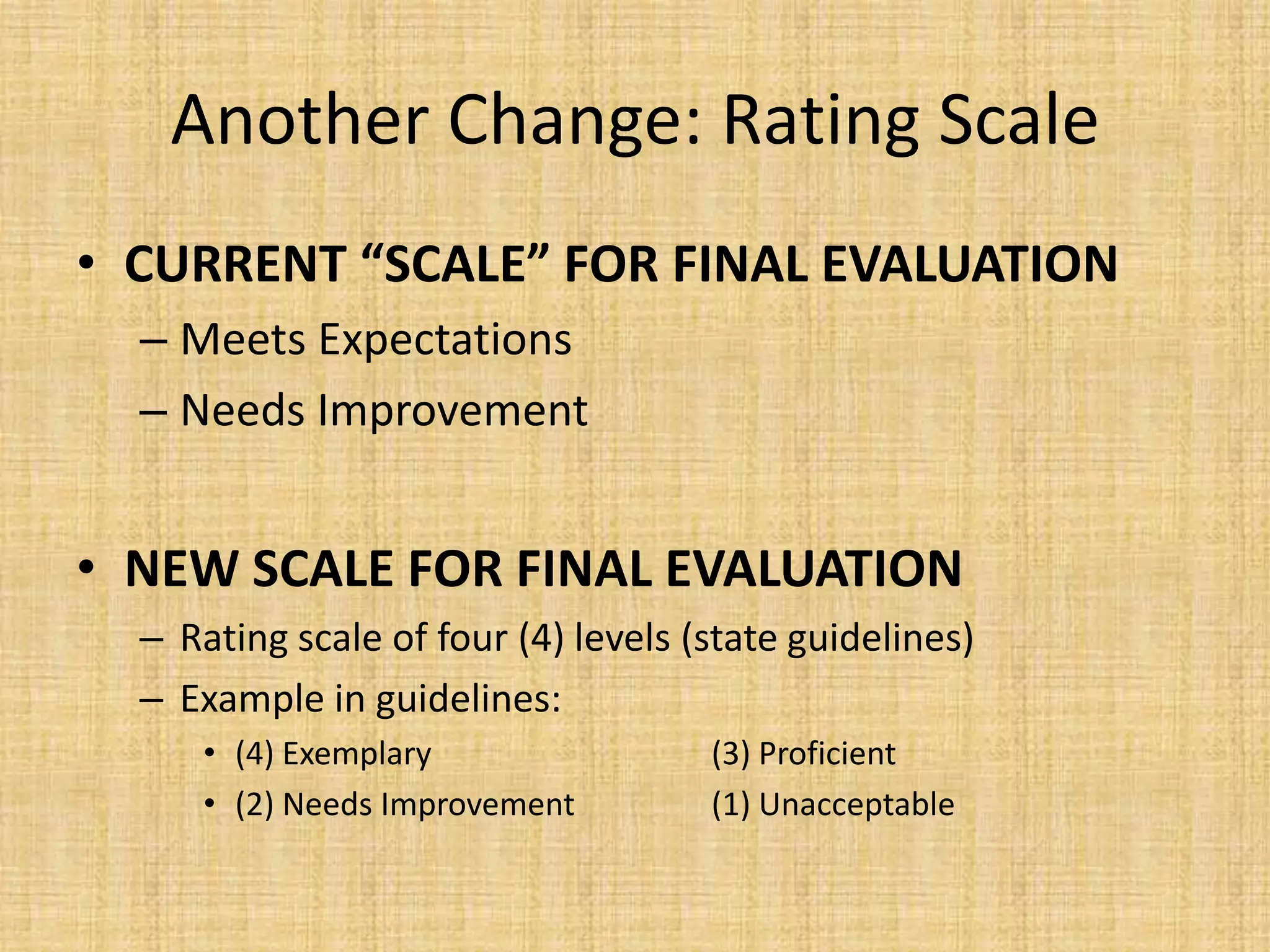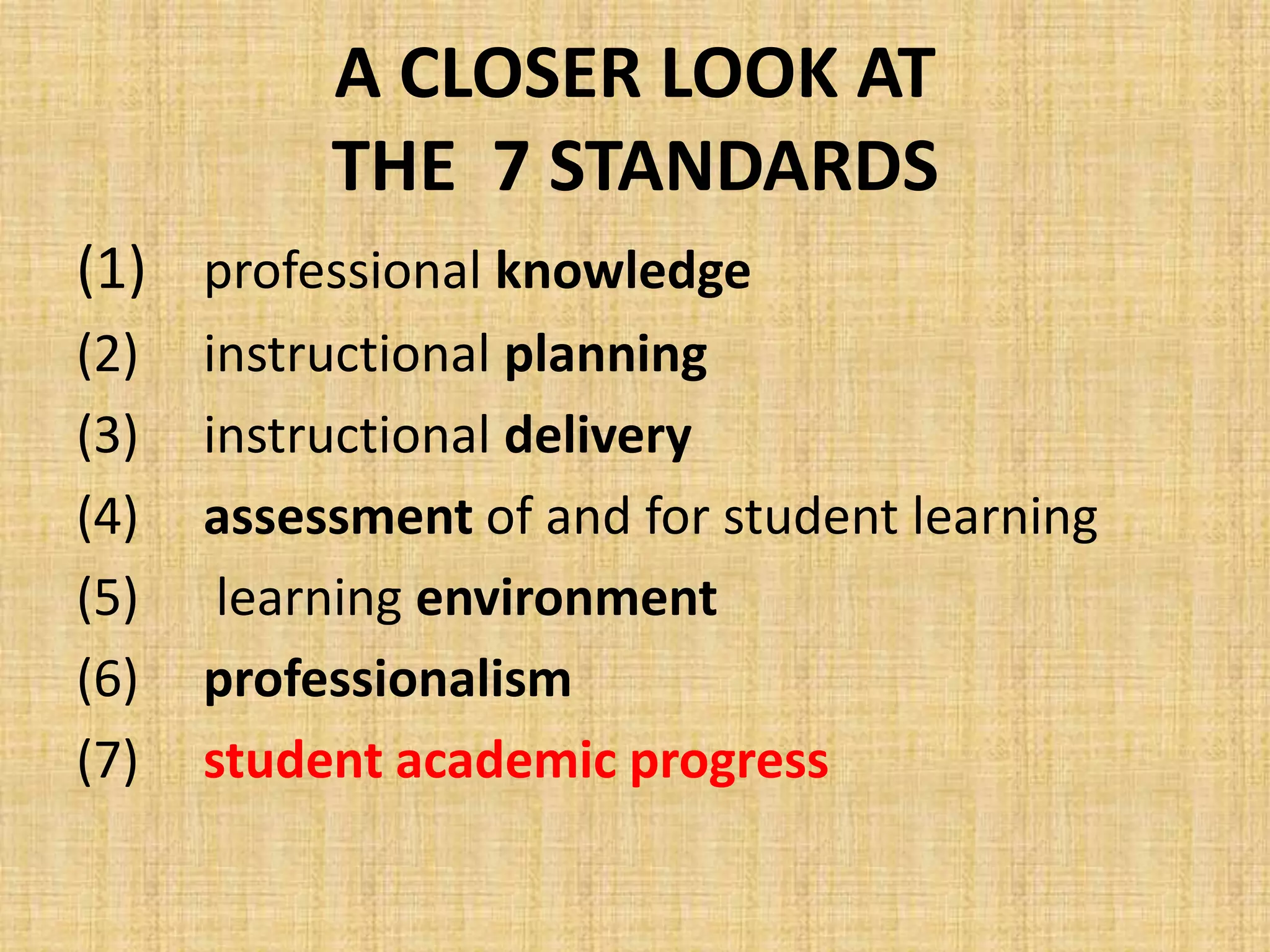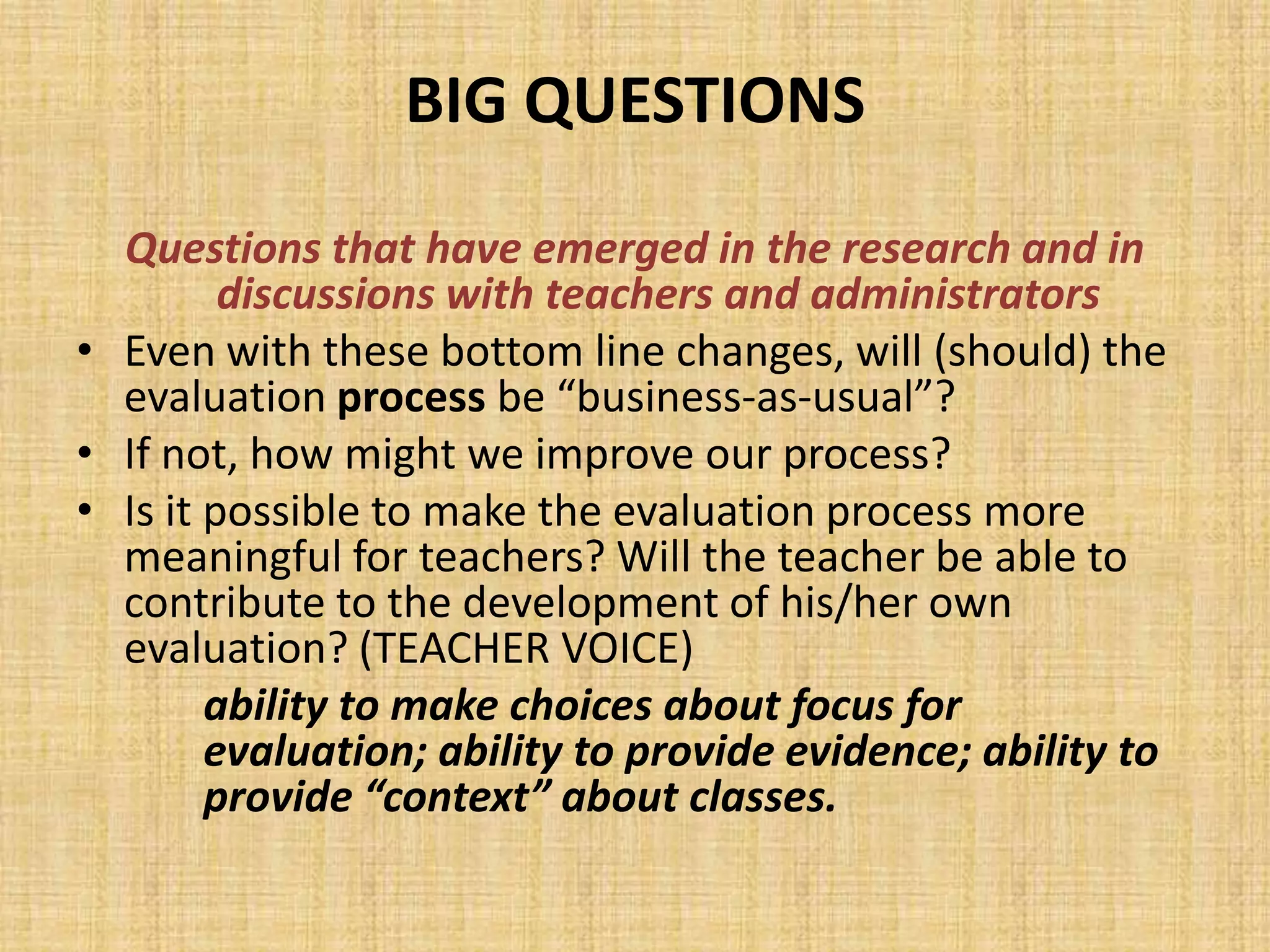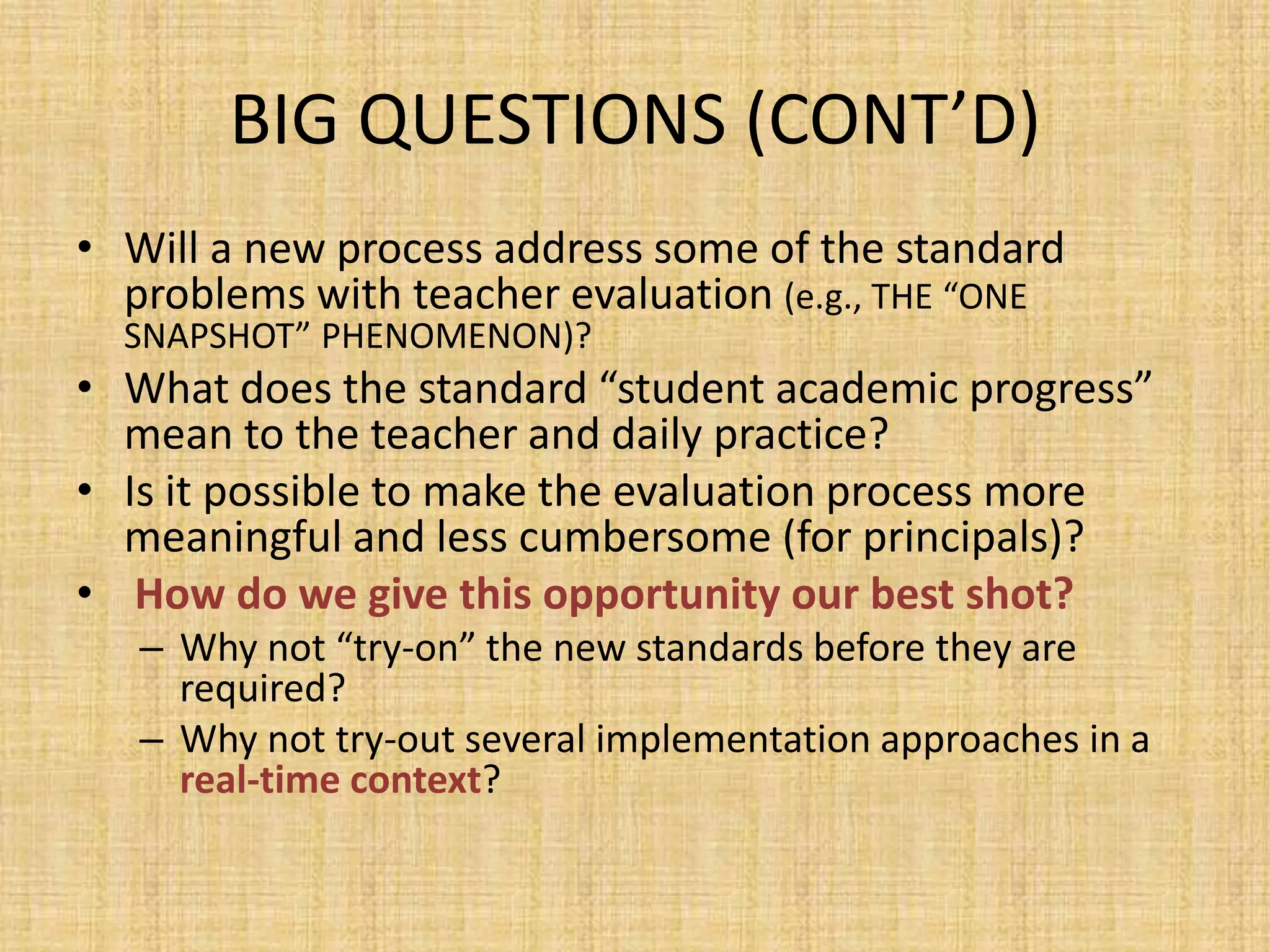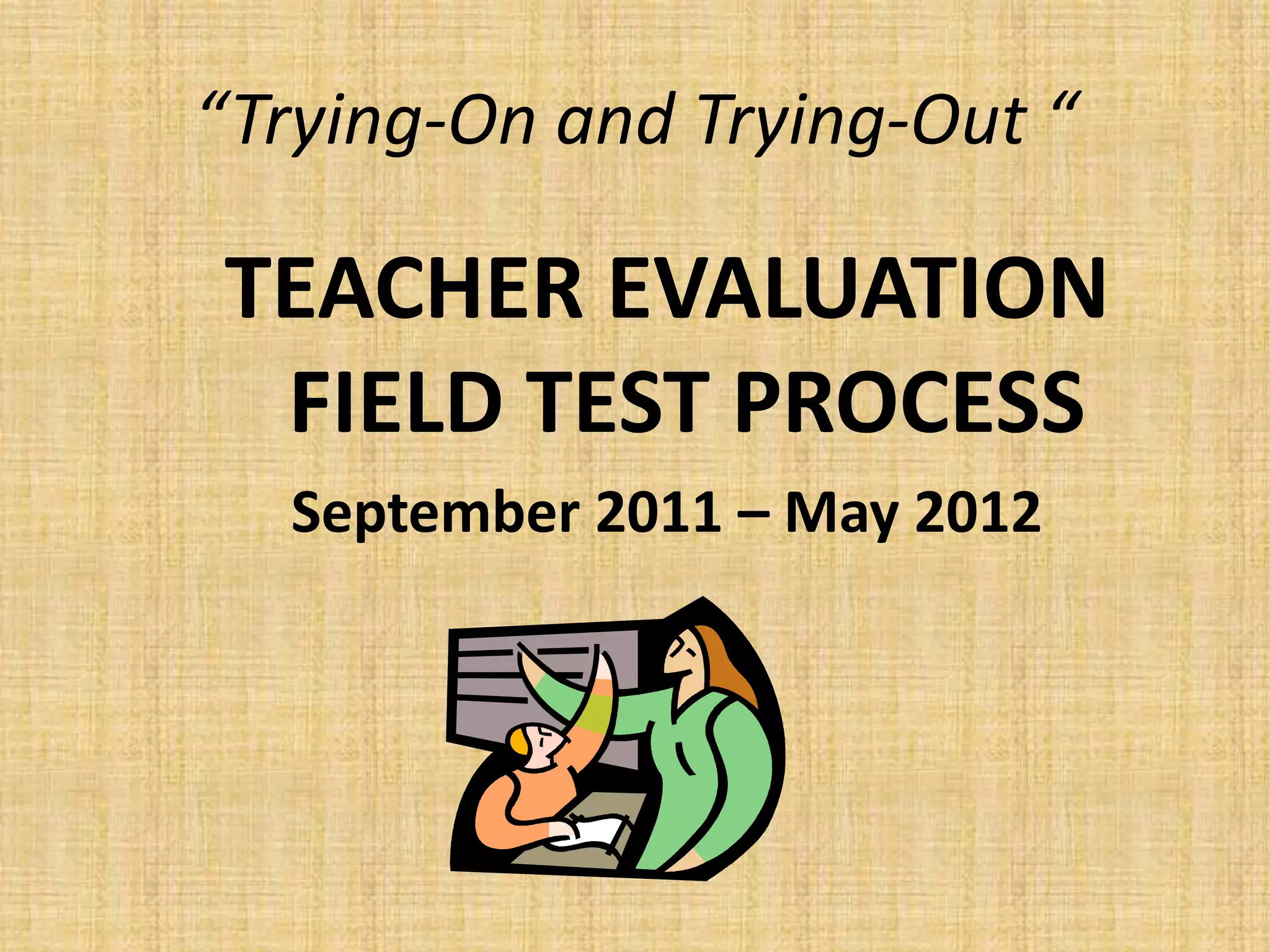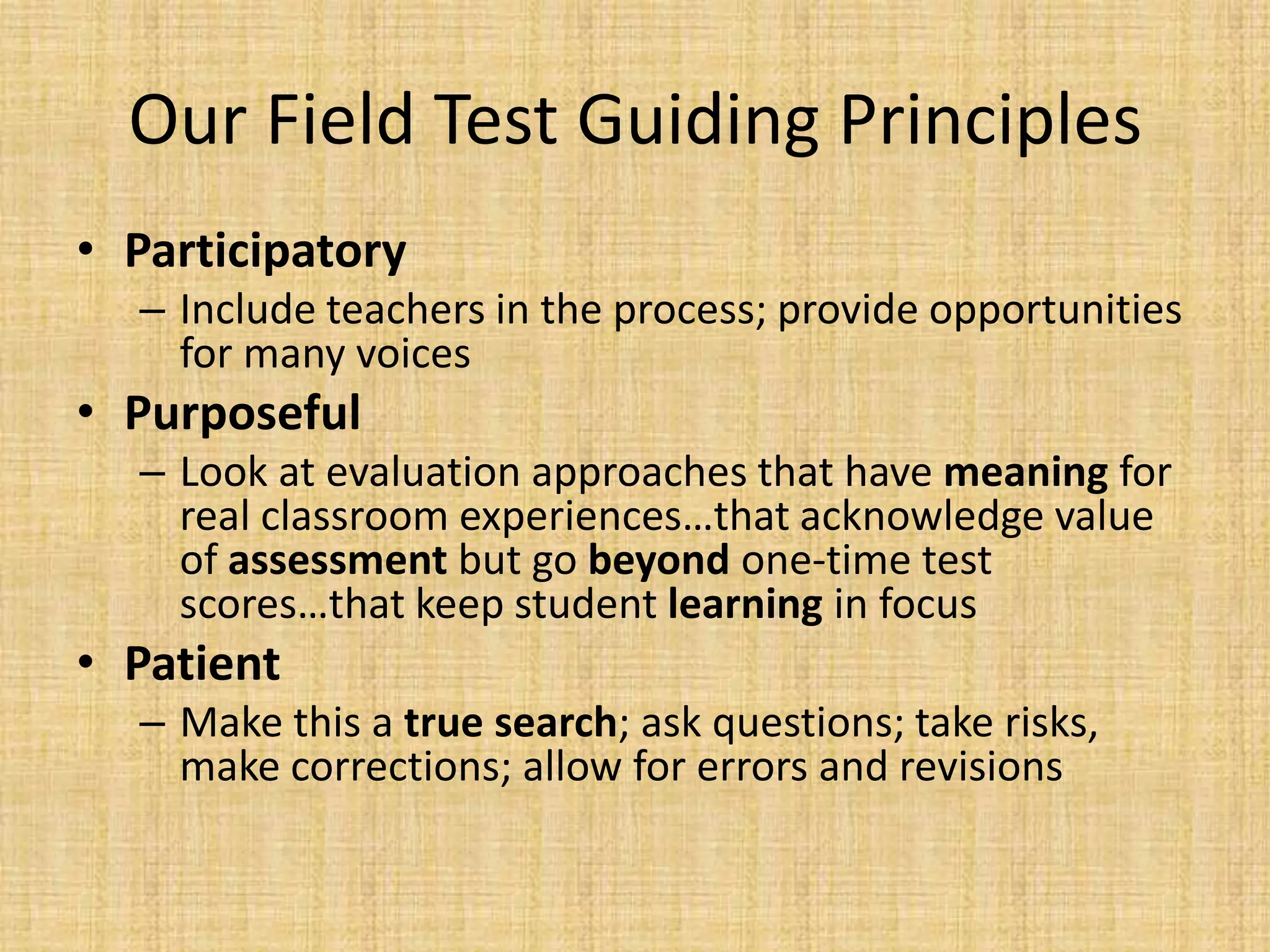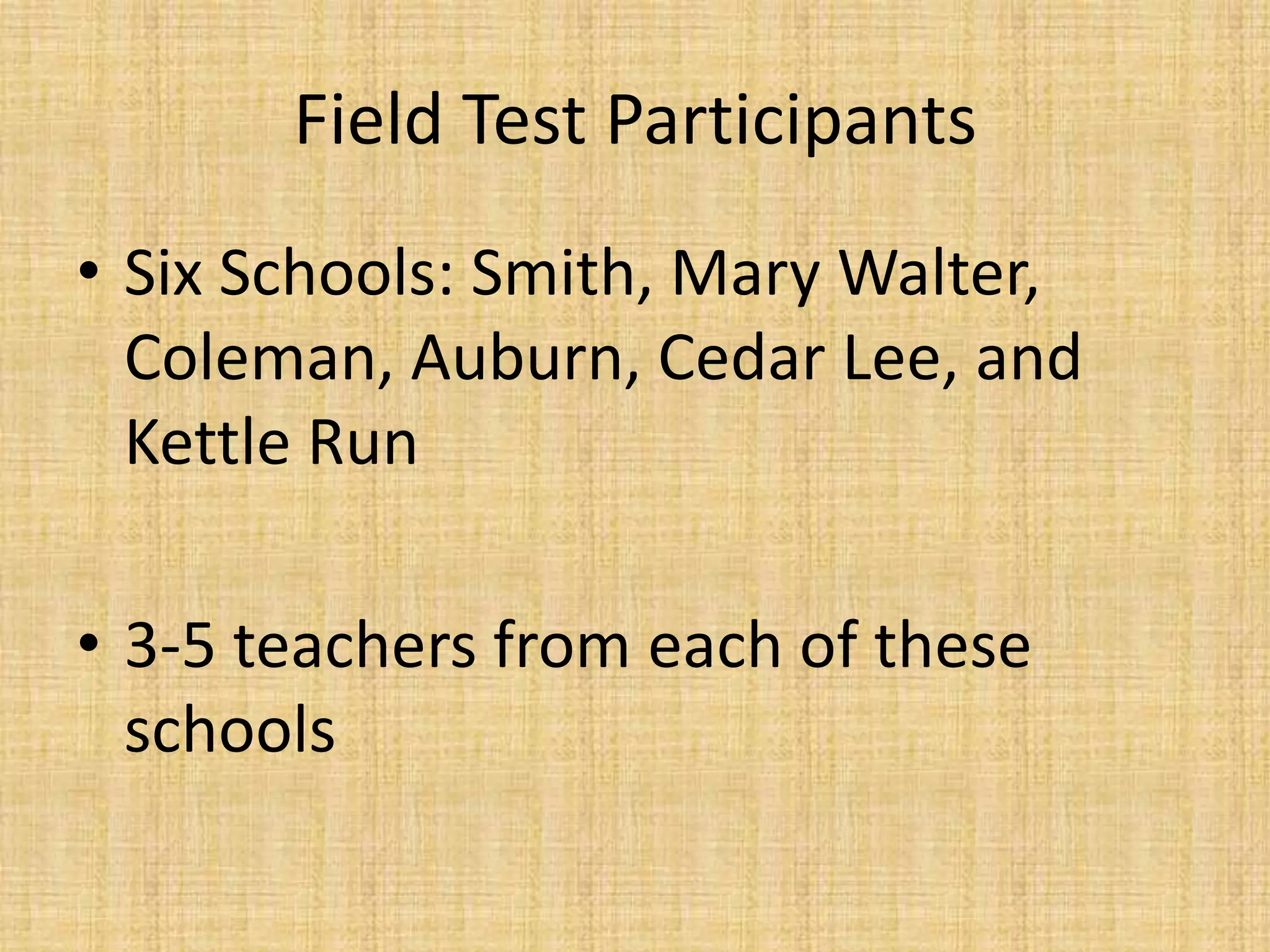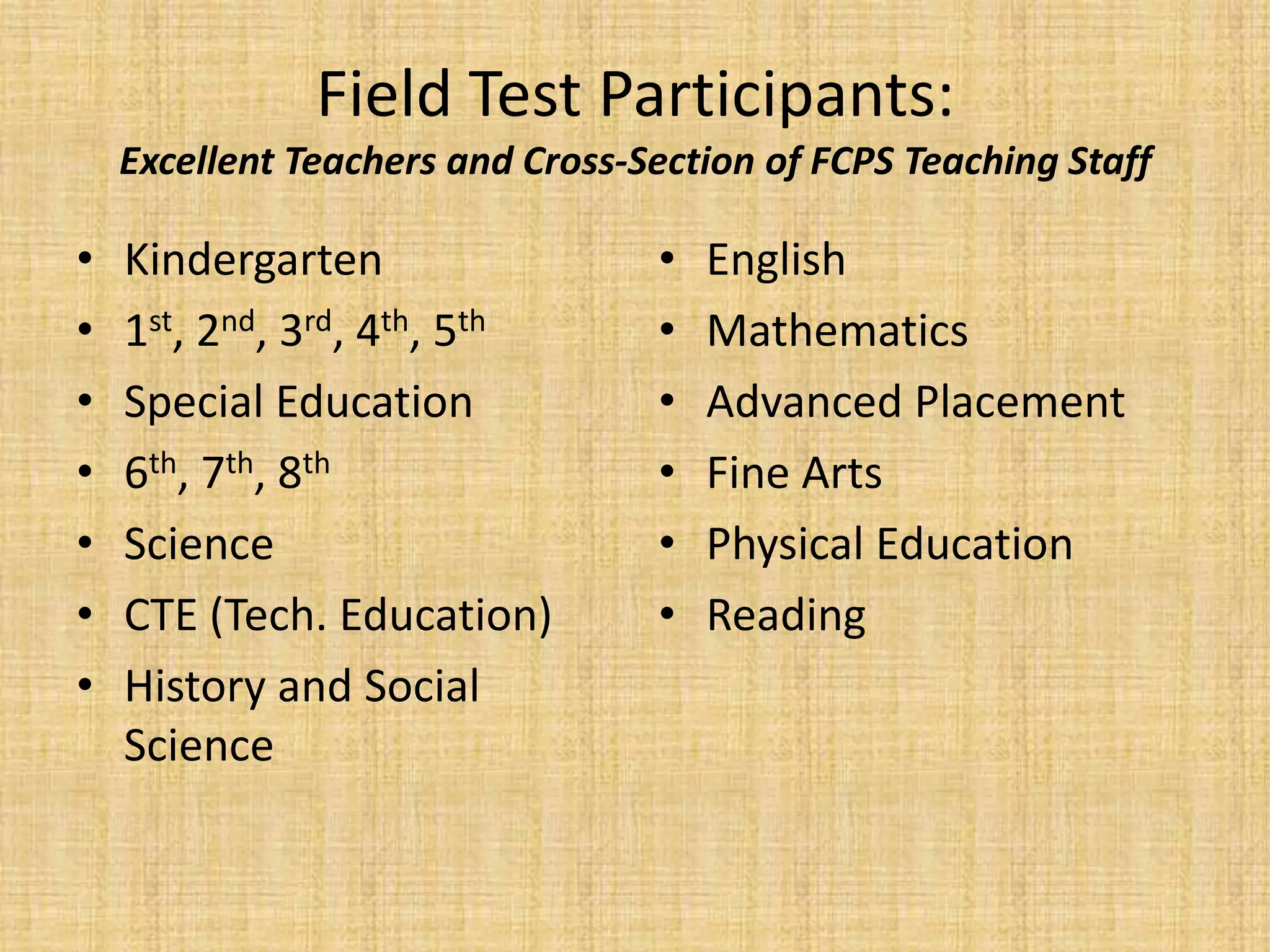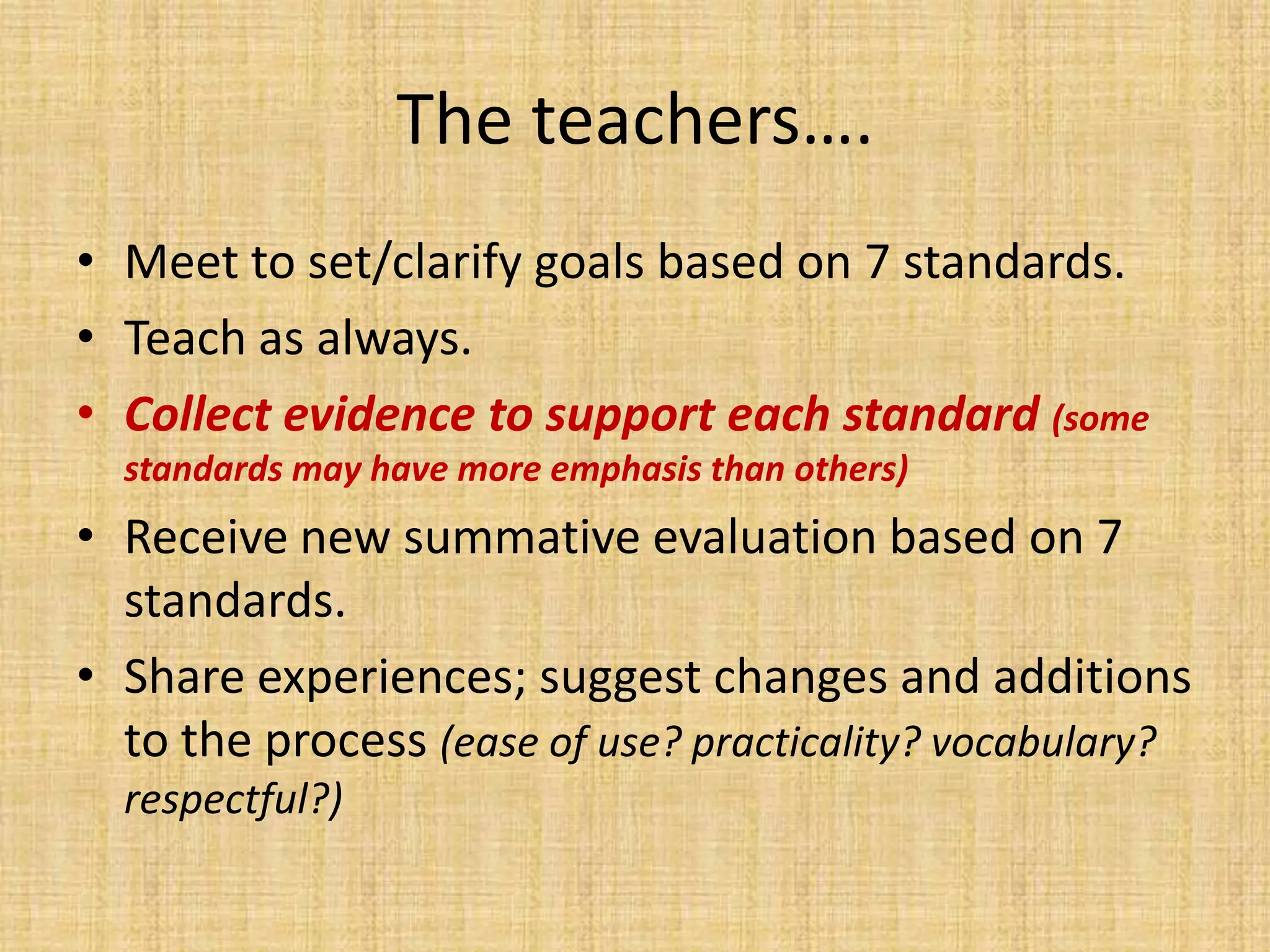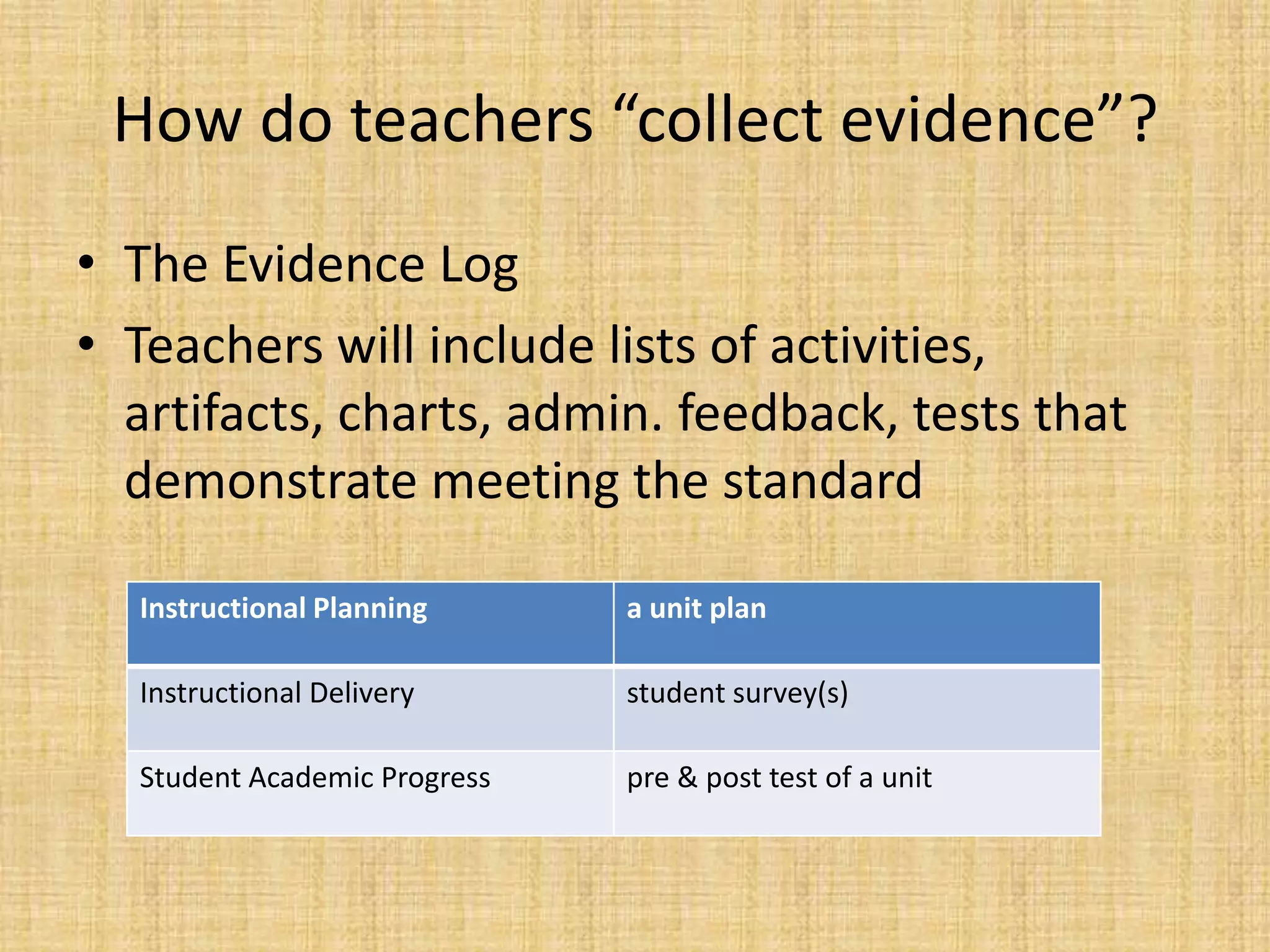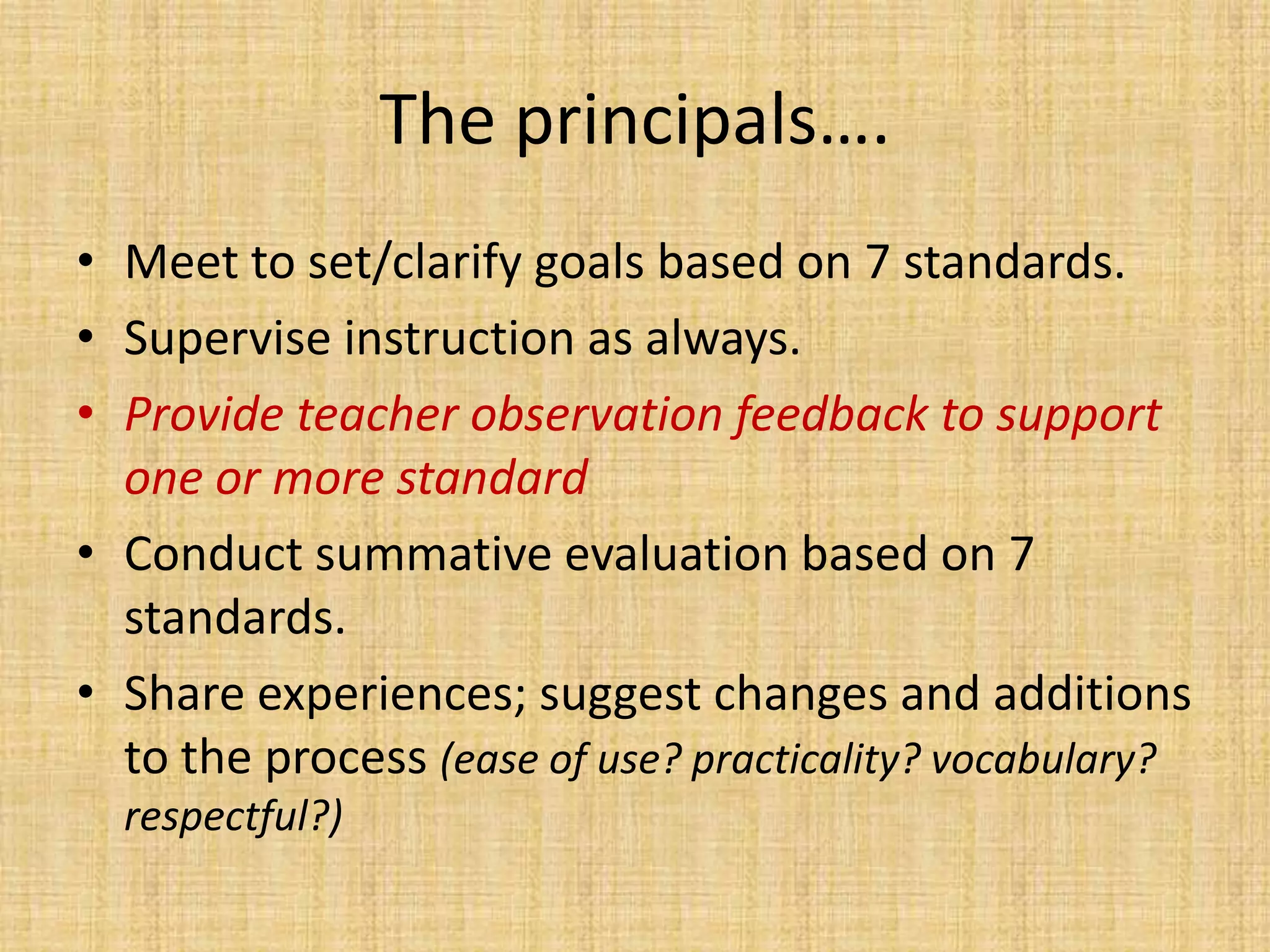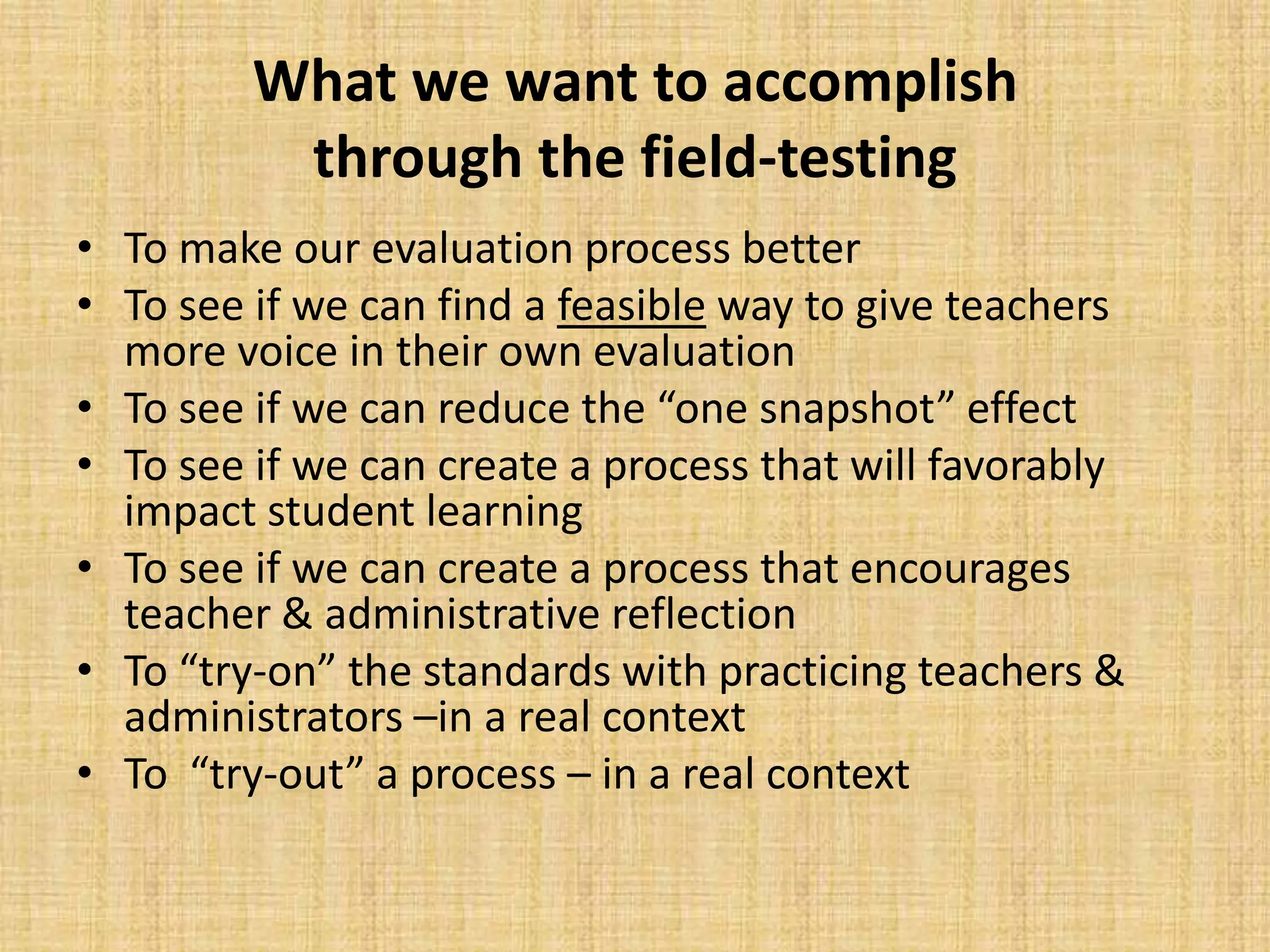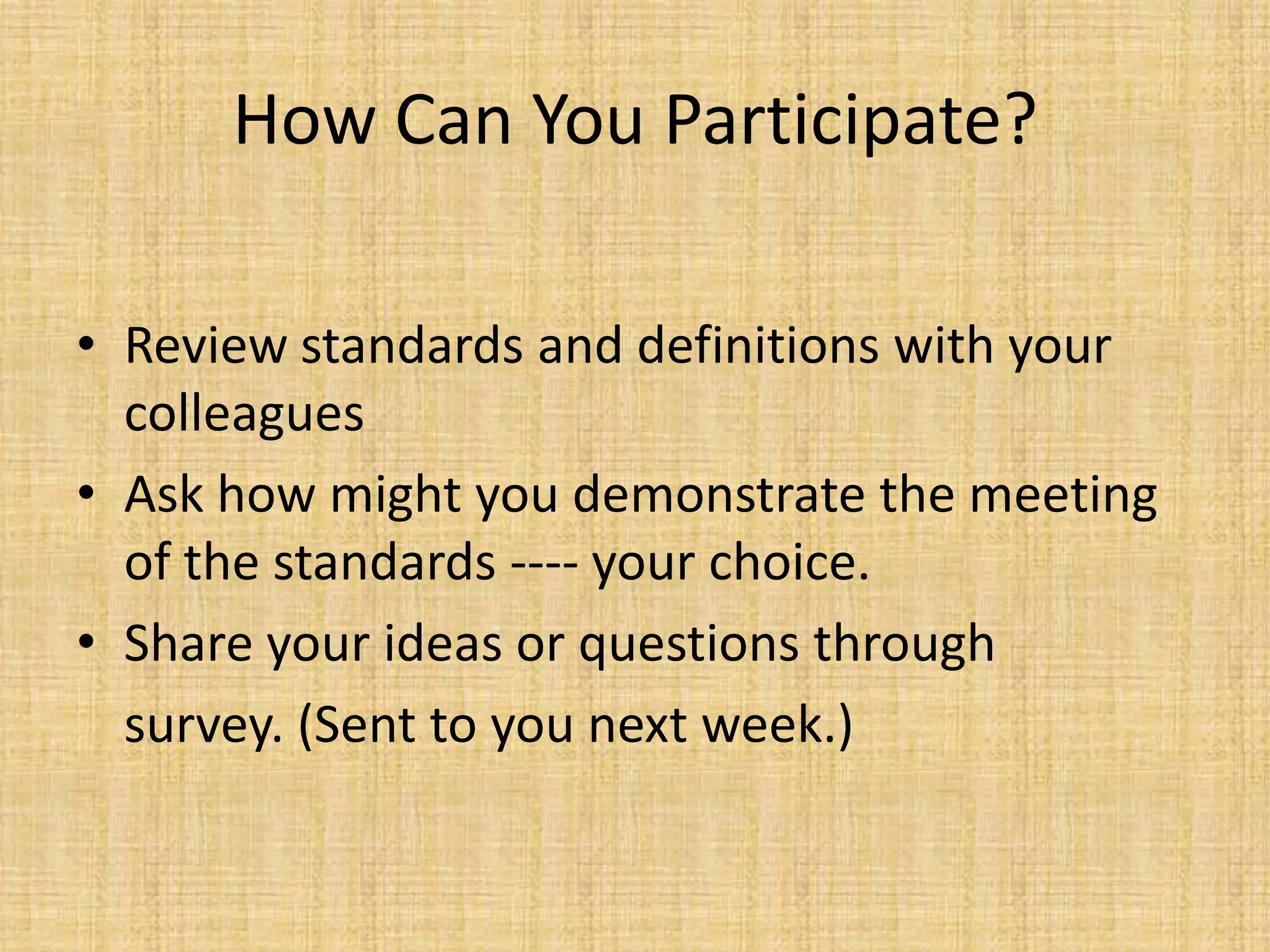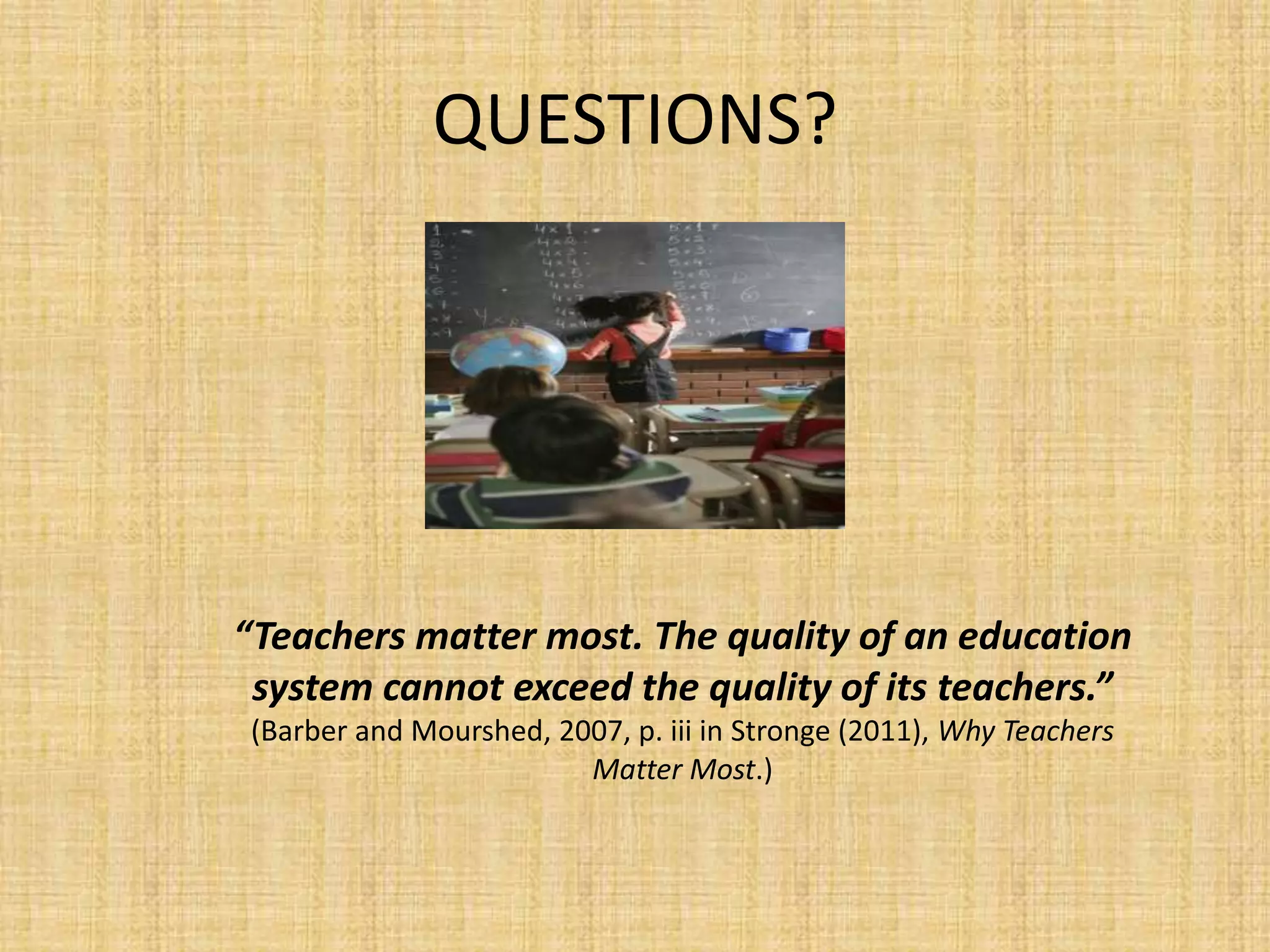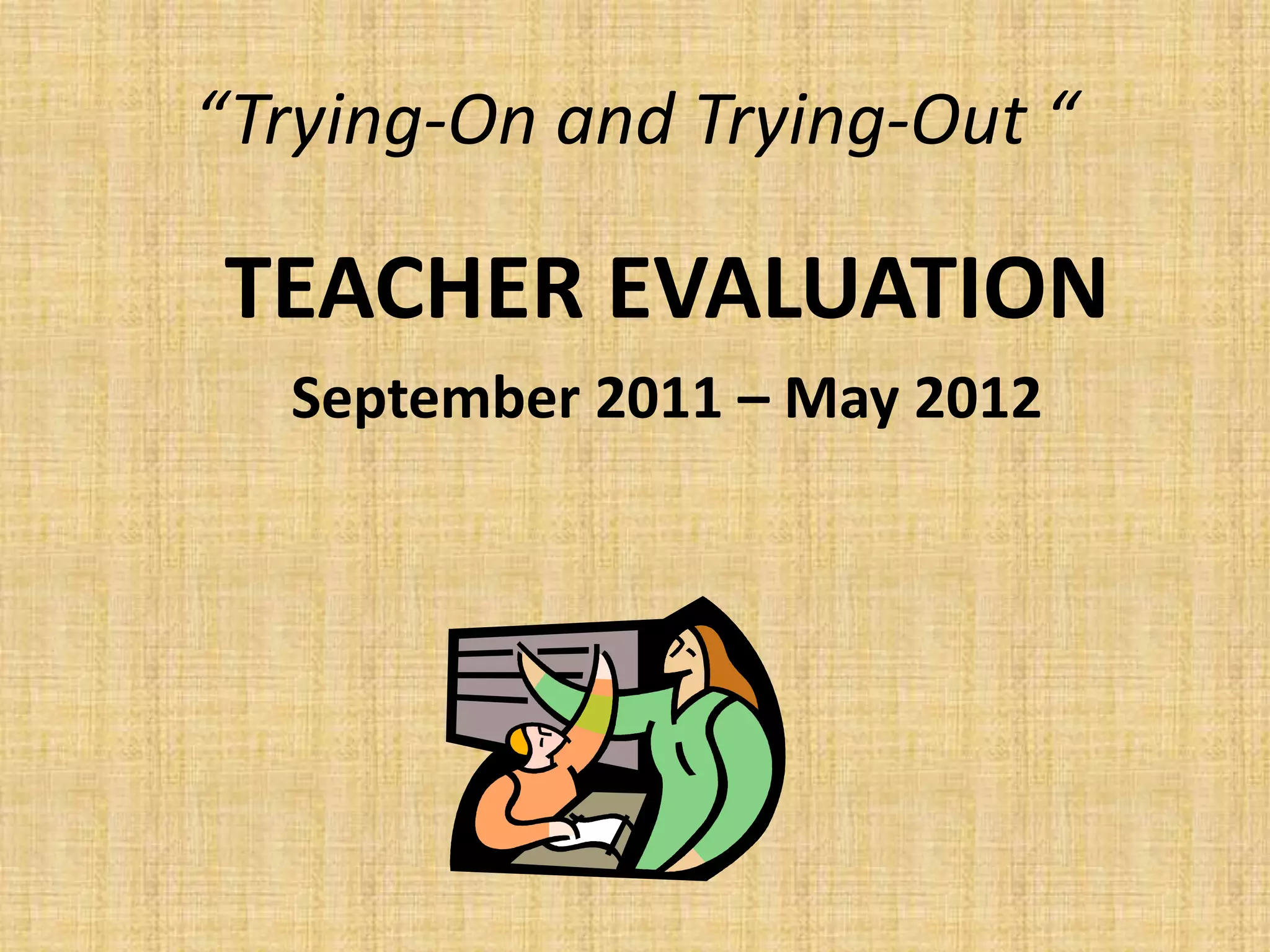This document introduces Fauquier County Public Schools' new teacher evaluation system which will be field tested from September 2011 to May 2012. The new system is in response to state legislative mandates and will evaluate teachers based on 7 standards rather than the previous 5. It aims to give teachers more voice in the process and make evaluations more meaningful. Six schools will participate by having teachers collect evidence of their performance and provide feedback. The goal is to create a practical and respectful system that encourages reflection and favors student learning outcomes over one-time test scores. Teachers and administrators will try out the standards in practice and suggest improvements.
